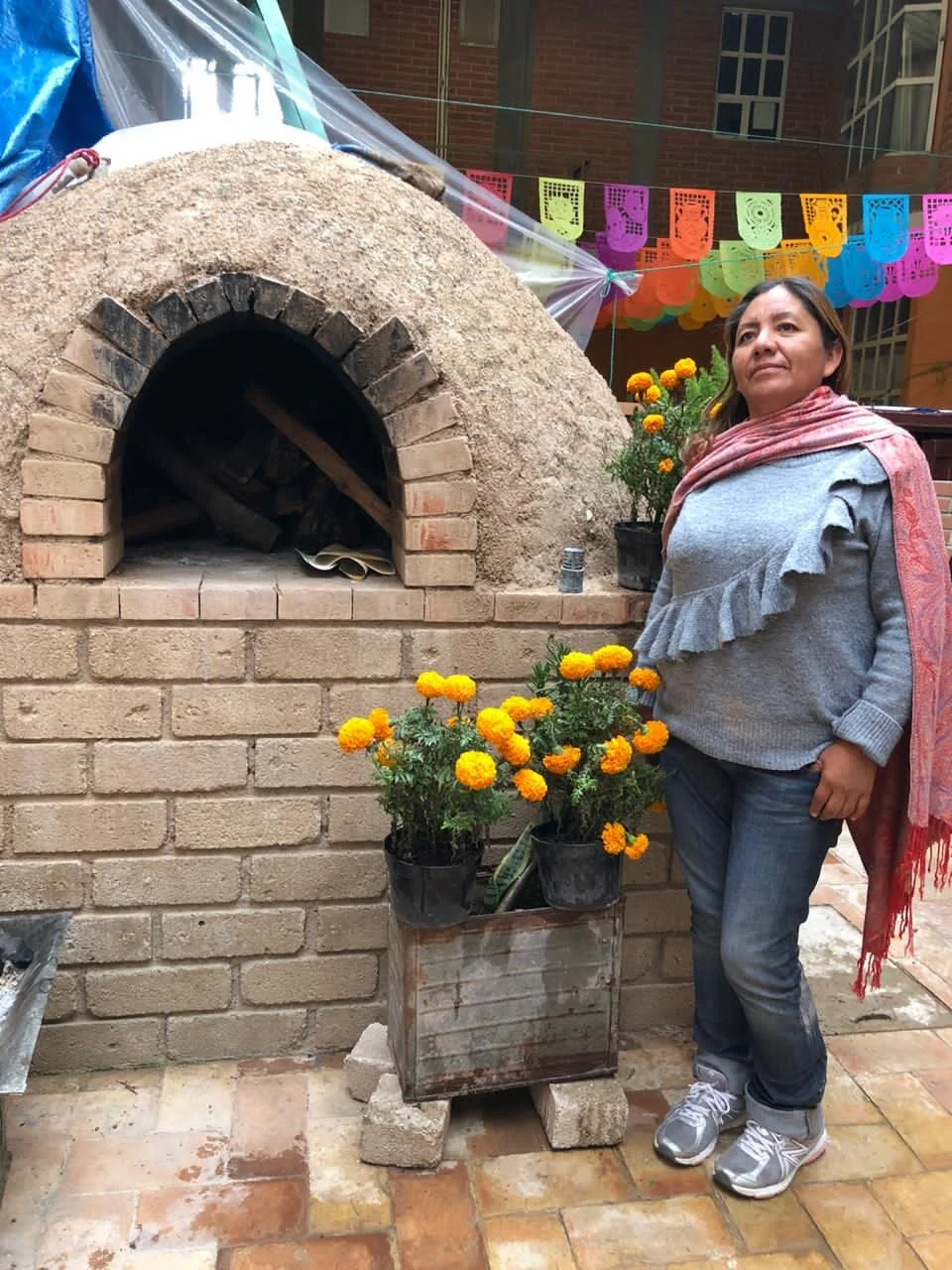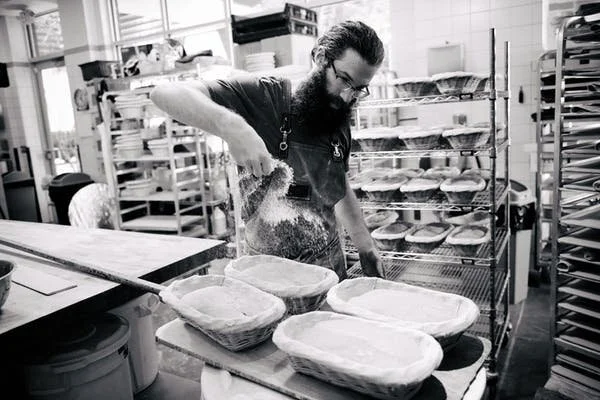Point of Origin Episode 27
Beyond the Wheat
“Grains are emblematic of every single thing that has happened in food production over the past 200-300 years, and the huge amount of erasure that has happened.”
Simon Thibault
Image Credit: Cedric Glasier
In many ways, no other food represents the center of culinary and communal life more than bread. It is likely the most consumed food in the world, but as it has been a staple food over the millenia, when we think of "bread", the images that come to mind are as diverse as the cultures of the world. Though it is a staple of just about every culture on earth, the contents of the bread we eat have become wildly disconnected to the grains of our ancestors. Today on Point of Origin we're looking at why that is, and how it came to be.
In this episode we examine the whitewashing of wheat and the emergence of the whole grain revival. Our guests are a smattering of whole grain bakers, farmers and scholars from around the world. We begin in Oaxaca with Mixtecan bakery owner Martina Julieta Castellanos Lopez from Rincón de la Grana bakery, then we move to Nova Scotia Canada where food writer, author and amateur whole grain baker Simon Thibault breaks down the industrial grains along with some home baking tips. In Puglia Italy, multigenerational grain farmer Leonardo Petruccelli and writer Marissia Tiller discuss the transformation of his family farm from into a whole grain enterprise, and finally, in Washington DC, Jonathan Bethony, baker and co-owner of Seylou Bakery talks about his whole grain journey as a baker. Today on point of origin, we're going Beyond Wheat.
Available on Apple Podcast, Spotify, & iHeartRadio
Highlights
( 00:00 ) Introduction by Martina Julieta Castellanos Lopez & Carmen Reyes
( 02:12 ) Stephen’s Introduction
( 03:45 ) Recognizing the Power of Grains
( 06:25 ) North America’s Relationship with Grains
( 12:15 ) Losing Access to the Knowledge of Grains
( 17:14 ) Baking at Home
( 19:57 ) History of Industrial Grown Grains
( 25:55 ) Marissia Tiller and Leo Petruccelli
( 29:22 ) Introducing Jonathan Bethony of Seylou Bakery
( 32:23 ) Flour Boom of the Spring of 2020
( 38:33 ) Advice for Home Baking from Jonathan
( 41:40 ) Closing Remarks from Stephen
Whole Grains vs Whole Wheats
Image Credit: Seylou Bakery
What are Grains?
Grains are the seeds of grass that are cultivated and harvested for food. A whole grain is comprised of three main elements: bran, germ and endosperm. The outer layer of a grain is known as the bran layer. The bran portion of the grain protects the seed and provides fiber, trace minerals and B vitamins. Inside of the bran layer is the germ, which is the part of the grain that is capable of sprouting a new plant. The germ provides nourishment for the seed and contains vitamins, minerals, oils, proteins and antioxidants. The other interior component of a grain is known as the endosperm, which is the inner, starchy part of the grain that provides carbohydrates and protein.
The Difference Between Whole Wheat and Whole Grain
While whole wheat and whole grain may sound like they are two different things, whole wheat is merely a type of whole grain. As mentioned above, whole grains include the entirety of the grain kernel, including the bran, germ and endosperm. Whole grain is an overarching category, and within it falls a number of different whole grains, including barley, brown rice, buckwheat, bulgur, millet, oatmeal, popcorn and whole wheat (to name a few). Whole wheat is a subset of whole grains that is limited to wheat products. For example, a whole grain bread can be made using any whole grain kernel, while a whole wheat bread indicates a bread that is made utilizing a whole wheat kernel.
[ Text from Bob’s Red Mill ]
What are Ancient Grains?
Image Credit: Marissia Tiller
Ancient grains are grains that have been largely unchanged over the past millennia. They have not been subjected to selective breeding like more widespread cereals such as corn, rice and modern varietals of wheat.
Some say that ancient grains are more nutritious than refined grain products, but other contest this, saying it is used more as a marketing term. Ancient grains have origins from all over the world, here’s a few examples:
Kamut - Central Asia
Einkorn - Western Asia
Emmer - Western Asia
Millet - India & Parts of Africa
Barley - Eurasia
Teff - East Africa
Quinoa - Northwestern South America
Spelt - Central Europe
Stone Mills and Ancient Grains:
a Renaissance in South Italy’s Flour Milling
Writing and Photos by by Marissia Tiller
Flour Shortage during the COVID-19 Pandemic
“When COVID hit, baking shelves were decimated.”
This sudden demand has thrown a wrench into the flour distribution process. In America’s industrialized-food supply chain, getting ingredients to the people who want them depends on far more than availability of the food itself. Supplies of wheat have actually remained abundant for flour brands, because less is being sent to restaurants and industrial bakeries. But brands are competing with one another to source the paper bags that consumer flour is packed in, as well as the trucks and drivers necessary to move it around the country. Bags of flour are big and bulky, and are allotted relatively little space on store shelves. And there’s the matter of making the flour—factories can ramp up their production only so much and still keep employees safe.
[ From The Atlantic ]
Simon’s Advice for Baking
Image Credit: http://simonthibault.com
“Baking at home is one of the most tentative and doable answers to understanding and using and respecting the work that goes into agriculture, the work that goes in milling, and the work that goes into providing food for people.”
Start small and be open
Think about what happens when you bake with something
Know the materials that you’re using and what kind of resources it will need to be baked successfully.
Ask: What do I actually need? What do I want? What do I want to play around with?
Use your senses and your hands
Try using whole grains—if you don’t want to use 100%, try incorporating 50%, and see how that goes
MARTINA JULIETA CASTELLANOS LOPEZ'S FAVORITE PASTRY:
Rincón de la Grana Bakery
LAS CONCHAS
“My favorite item is the Conchas, because in a bakery, conches can never not be on the menu. There are different sizes, big ones, small ones, different flavors, different colors.”
Concha is a traditional Mexican sweet bread roll. Conchas get their name from their round shape and their striped, seashell-like appearance. A concha consists of two parts, a sweetened bread roll, and a crunchy topping. The history of Conchas can be traced all the way back to pre-colonial times, when wheat first was planted in Mexico. By the 1700’s the demand for bread and wheat products had risen, resulting in the migration of French bakers to Mexico. With them, they brought their recipe for brioche, and it is this bread that most likely was the base for Conchas.
[ Learn more in this article from Eater ]
Meet our Guests
About MARTINA JULIETA CASTELLANOS LOPEZ
Martina owns the Rincón de la Grana Bakery located at:
5 de Mayo #20 , Asuncion, Nochixtlan Oaxaca 69600
Martina is the owner of “El Rincón de la Grana”, a bakery located in the State of Oaxaca. She decided to open up her business since she realized there weren’t many healthy options or whole breads in her community. You can find Martina working in her bakery or at her dog shelter helping street dogs get rehabilitated and adopted.
About Simon Thibault
Image Credit: http://simonthibault.com
Simon Thibault is a journalist, food writer, editor, and radio producer based out of Halifax, Nova Scotia, Canada. And above all else, an avid and accomplished home baker enamoured by whole grains.
He is the author of Pantry and Palate, and Simon was featured on everything from NPR, CBC Radio and Radio-Canada, Chatelaine, The National Post, and KCRW’s Good Food and many more.
ABout Leo Petruccelli
Image Credit: http://zillettadibrancia.com/
Leonardo Petruccelli is a young agronomist, who after studying and training abroad, has decided to return to his land to continue his family’s tradition and at the same time innovate the production process .
Member of Slow Food Italy, he plays an active role in the local community as a promoter of sustainable agriculture. He works with passion and from his stone mill, through a slow grinding of the grains by means of natural stones, live flours are born with an unmistakable aroma and flavor, rich in fibers and highly digestible, evoking the taste of the wheat of the past.
ABout Marissia Tiller
Marissia Tiller is a freelance writer, aspiring journalist/digital media storyteller currently exploring culture and flour milling in the Italian countryside. She currently splits her time between France, Italy and her hometown of finger lickin’ barbecue and soulful blues in the heart and heat of the the South, Memphis, Tennessee.
ABOUT Jonathan Bethony
Image Credit: https://www.seylou.com
Jonathan Bethony is the Head Baker and co-owner of SEYLOU. His professional training began at Michel Suas's San Francisco Baking Institute, where he was introduced to classical bread and pastry. Bakers and friends in the Bay Area such as Dave Miller, Josey Baker, Eduardo Morell, Chad Robertson, Craig Ponsford and Mike Zakowski inspired his use of whole grains and helped to define his style.
Since then, he has been on a journey of experimental research. At Washington State University's Bread Lab, he worked with Dr. Stephen Jones to bring together the science of traditional plant breeding with the technique and artistry from his training in baking and previous career as a musician.
Seylou in Senegal
Morokebe Sanokho is a millet farmer in Central Senegal. He intends to build a bakery focused on integrating local cereals into the bread. His work is inspired and aided by SEYLOU Bakery and Mill in Washington DC. Funds raised go directly to infrastructure, equipment, and training.


















